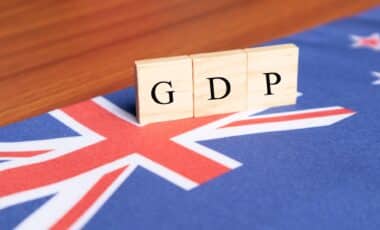As global trade tensions between the United States and China continue to reshape international markets, concerns have grown over the potential consequences for countries deeply embedded in both economies.
Australia, whose economic fortunes are closely tied to Beijing through trade and to Washington through security and investment, has been widely considered at risk of collateral damage from tariff-driven disruptions.
Yet recent economic modelling challenges this assumption, indicating that Australia may experience slight gains rather than losses under certain trade war scenarios.
The projections suggest that shifts in global trade flows and capital dynamics could offer Australia modest advantages, highlighting the complexity of global economic interdependence amid rising protectionism.
Australia’s Exposure to the World’s Largest Economies
Amid the ongoing escalation of trade tensions between the United States and China, Australia has been widely perceived as economically vulnerable due to its close commercial ties with both nations.
With China remaining its largest trading partner and the US a key strategic ally, the ripple effects of tariffs and retaliatory measures have triggered concerns over Australia’s economic stability.
However, recent economic modelling indicates that Australia may not only avoid significant damage but could see minor improvements in trade conditions.
The research, based on global economic projections, outlines two trade war scenarios—before and after a 90-day pause announced by the Trump administration—and finds Australia marginally better off in both.
Trade Diversion and Improved Investment Climate
According to SBS News, Australia stands to benefit from what economists describe as “trade diversion,” a phenomenon where goods redirected from tariff-affected markets find alternative destinations.
As Chinese and European exporters encounter barriers in the US, markets like Australia become more attractive by comparison. This could enhance Australia’s access to competitively priced imports while strengthening its export position in sectors like agriculture and raw materials.
The model also suggests improved terms of trade—a measure of export prices relative to imports—which supports national income and, indirectly, consumer consumption. In both the pre-pause and post-pause scenarios analysed, Australian real consumption experienced a slight increase, attributed to stronger investment and better global borrowing conditions.
Lower global interest rates, driven by reduced demand for capital in both the US and China, may also stimulate real investment in Australia.
As borrowing becomes more affordable, businesses are more likely to invest in expansion, technology and workforce development. This could contribute to sustained, albeit modest, economic growth over the projection period.
Limited Direct Harm but Ongoing Uncertainties
Despite its modest gains, Australia is not entirely insulated from the broader economic turbulence. According to the analysis, although Australia does not impose retaliatory tariffs in either scenario, its exposure to global financial sentiment leaves it vulnerable to investor uncertainty.
The Trump administration’s abrupt shifts in trade policy—culminating in three major announcements in one week—have already unsettled markets.
Moreover, any prolonged disruption in US-China trade relations could indirectly affect Australia’s export demand, particularly for sectors heavily reliant on Chinese manufacturing or US-based investment. The benefits identified in the modelling are contingent upon a relatively stable response from global markets, something that remains far from guaranteed.









